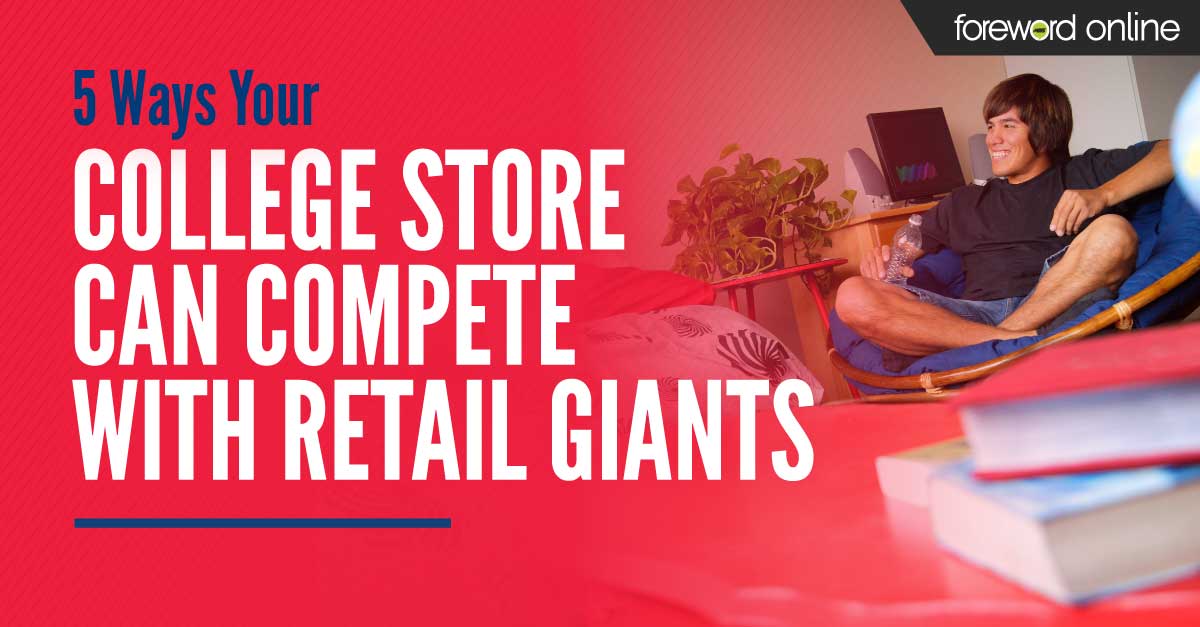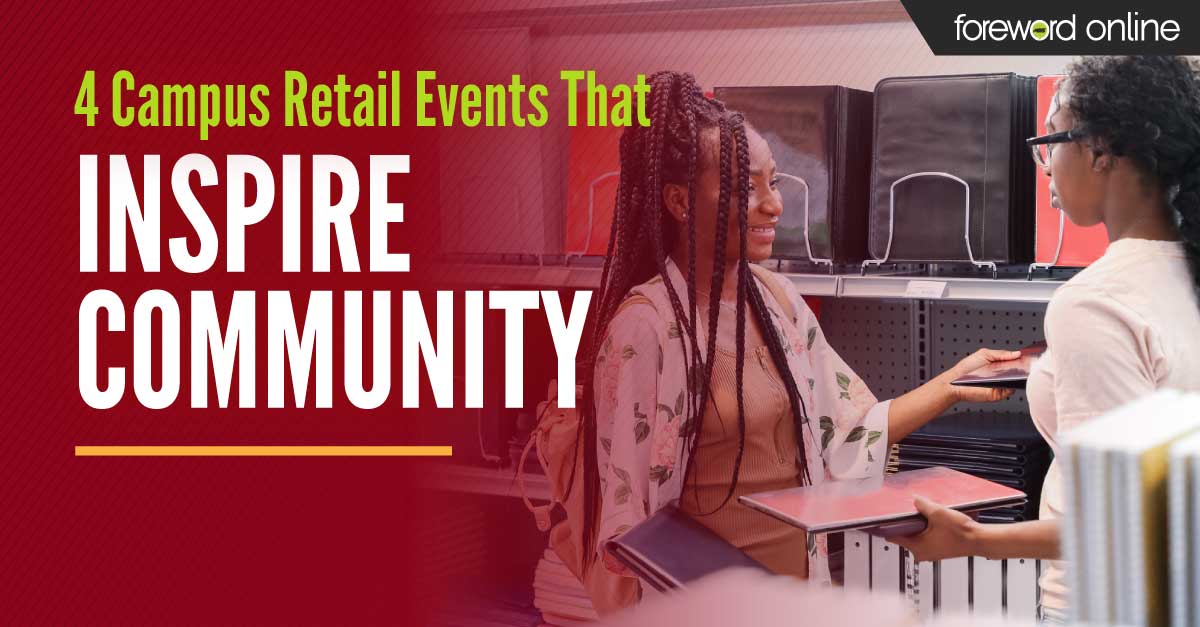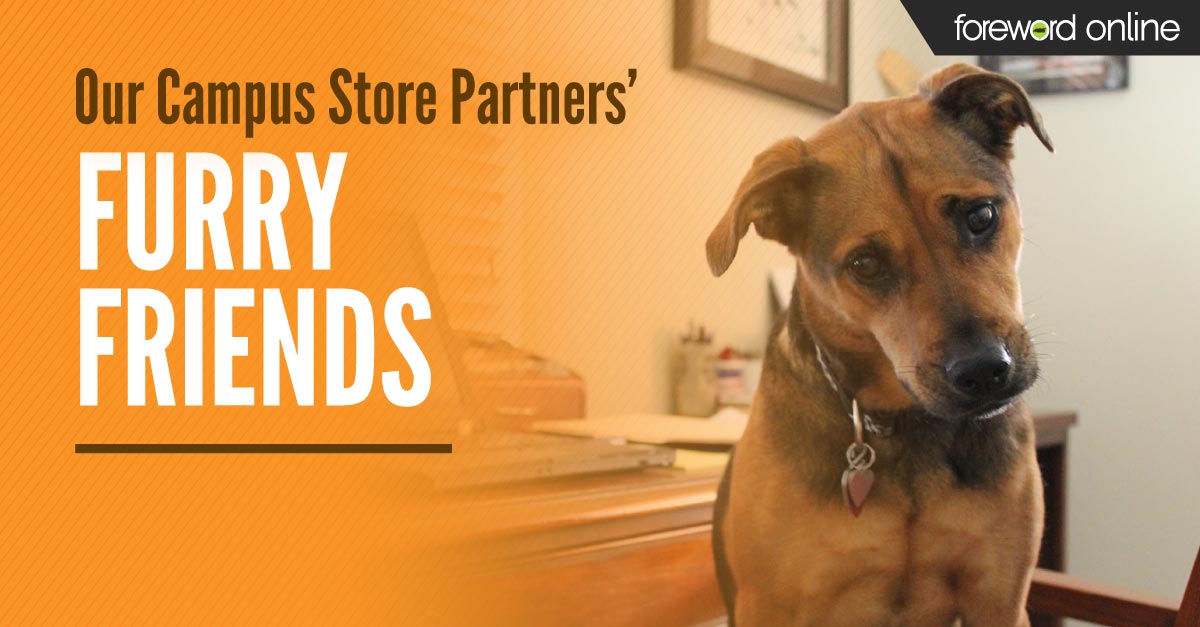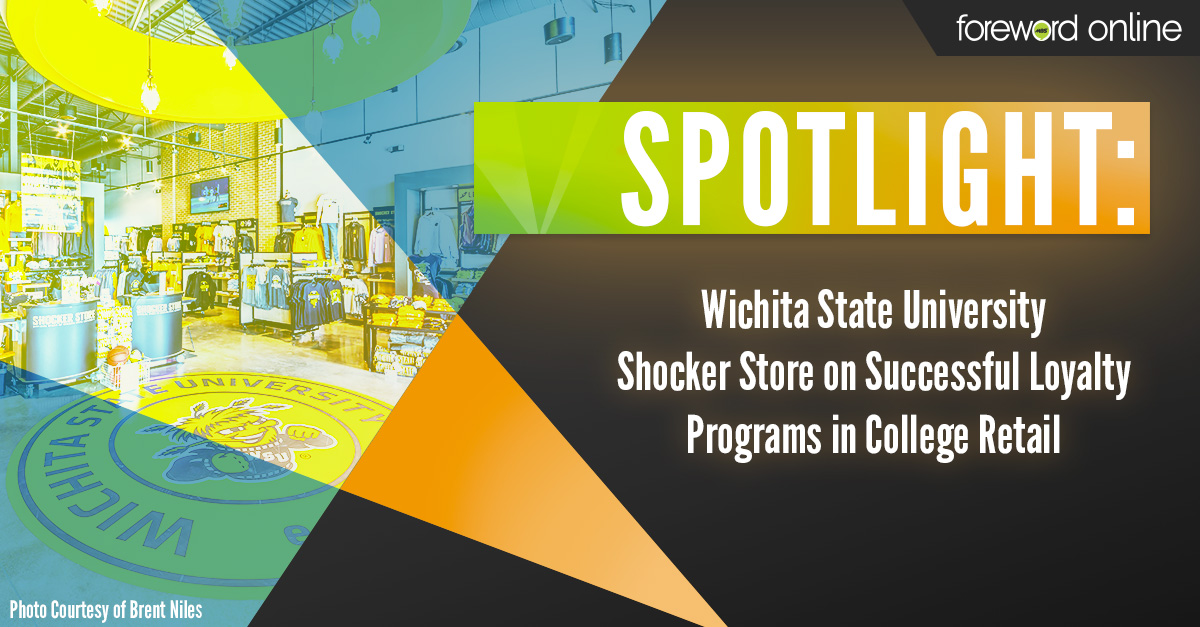Every industry experiences disruption that changes the way business is done. From education to retail to publishing, businesses and organizations must develop strategies that will help them compete in an increasingly virtual world. College stores experience change from all sides: new course material formats, evolving student and customer expectations, and recent campus and state initiatives. How can your store not only compete but thrive in this new world of retail giants?

Five methods college stores use to thrive in today’s retail environment
1. Increasing customer convenience
Even two-day shipping cannot compete with the instant gratification of buying in-store. However, it is essential that customers have a convenient experience. Long lines, confusing layouts and slow service can lead customers away from the store.One way stores provide customers with a better in-store experience is by streamlining course material distribution. Through tactics like organizing books by author name, implementing counter service and arranging for dorm delivery, college stores of all sizes have been able to improve student service through convenience.
- Author name shelving
“It went amazingly well. Reshelving has been fantastic. The elimination of cross-listing titles has been phenomenal. You look up the author of the book, just like at a library — very simple. So, it’s been a great change for us,” NDSU Bookstore Director Kim Anvinson “Older students have a little bit of a learning curve, but once we show them on our inSite website, or in their Blackboard portal, how easy it is to link to our website to find the author, they get it. As soon as the students feel more comfortable with it, I think they will like it as well.” - Counter service
“The line to ask questions had gotten very long, and when anyone in our textbook department walked into the stacks during rush, they were inundated with student questions for an hour or more. So, we talked about how we could improve the customer experience. We asked, ‘What we can do to serve our students better?’ It really came down to needing to have that counter where we could talk to each student and help answer their questions in an organized way,” CWU Wildcat Textbook Supervisor Sara Senter “The counter allows us to pick orders even while the students at the counter are being helped. Before, our staff would come in an hour before the store opened to pick online orders. If we couldn’t get all the web orders picked before then, we had to wait until students were in class to finish or restock shelves. It has helped the store as a whole. Our service has really improved.” - Dorm delivery
“We have had some students comment about how convenient the system is. They also comment that the MBS pricing model on some titles is very competitive, and they appreciate the on-campus services we do like the dorm delivery,” Belmont Store Managing Director Auxiliary Services Keith Chapman “The parents are particularly impressed with the on-campus services we offer. We get a lot of standard full orders from the parents because of the convenience. They know their student will have the materials they need in their hands the first day of class — the professors appreciate that too."
2. Providing superior service
When stores offer customers friendly and helpful service that goes beyond just making a sale, they stand out from other retailers. Savvy collegiate retailers increase their campus relevance by expanding the services they provide, which, in turn, strengthens student relationships.
There are a number of ways a college store can expand its service to campus. OrangeTech at the OSU University Store, for example, focuses on building student relationships from the start with free tech services. The store works to ensure it supports the educational mission of its school while providing students with the best service possible.
“It really helps build relationships. Students know we’re here for them. It usually starts in the first year. That’s when students buy a computer for school. Then they keep returning throughout their time at OSU,” OrangeTech Assistant Manager Christy Lench said. “It lets us start building relationships from day one. One thing we try to offer customers is a consistent experience. You can expect the people here to have the knowledge you need every time you come in. No matter what, you’ll find someone with the same level of experience who’s able to help you.”
3. Building trust with price matching
Whether in store or online, price matching is becoming a more common consumer expectation. By implementing a price-matching program, your store demonstrates that it cares more about its customers than the bottom line. It’s also a great way to build trust and keep customers coming back to your store.
The Towson Store has offered a price-matching program for several years. Through the program, students can trust that they will get the best price from the college store.
“I’ve spoken to quite a few schools about the ramifications of it. For us, it’s a really great marketing tool. I can say, ‘Why would you go anywhere else?’” University Store Director Stacy Elofir said. “It’s a really cool thing to say to parents at orientation. I’ve got my [price matching] posters everywhere and all kinds of jazz. Out of the millions of dollars in book sales that we do in the fall, to date, I’ve only had 32 price-match requests submitted. 30 were accepted. Two were declined — one you’ll be happy to know, because we were actually cheaper. While our margins were cut, we didn’t lose any money. And we gained customers. “
4. Implementing experiential shopping
College stores offer more than a generic retail experience. As part of the larger school brand, your store reflects the lives of the students and alumni you serve. Stores that embody the school brand, culture and mission make strong connections with customers and create a retail experience that entices customers back.
When the BYU Store began its remodeling efforts, creating an experiential retail environment that embodied the school mission was a top priority.
“We hope the remodel drives an entirely new experience that will help with the big three fundamental sales metrics of retail: recency, frequency, and monetary value (RFM). By delivering a new and exciting experience, we hope our customers will come more often, stay longer and spend more. The favorable impressions our customers leave our store with are far more likely to stick now,” BYU Store Director Mark Clegg said. “Because we are a destination store for customers off campus, it is critical for us to deliver on an experience that makes customers want to make the effort to come again. Taking into consideration the number of unique brick-and-mortar customers that we have, if we can influence them to come back just one more time during a 12-month period and spend what they normally do, it translates into a $6 million-dollar potential benefit for us. Most importantly, it positions the store for future growth and influence on the campus.”
5. Improving student affordability
Student affordability is one of the top issues on campus. College stores support affordability initiatives by offering students the most cost-saving textbook options possible. To do that, stores must adopt new formats, educate students and faculty on the different options available, and get timely faculty adoptions.
Textbook sourcing has become a tool many stores rely on to offer students low-cost used books. However, the practice can take a significant amount of time and comes with its own set of challenges. Tools like SimpleSource help stores mitigate the pitfalls of textbook sourcing while offering stores the benefits.
The Skyline College Bookstore is already getting more wholesale used books through SimpleSource. Store Manager Kevin Chak has been impressed with the number and quality of used books his store has received.
“It was the same books, same quality as I always get from MBS. It’s just like regular ordering, but I’m getting more books. I had Robin [Stegen] run a report for me so I could compare the percentage of books I was getting to the previous year. I compared summer to summer and fall to fall,” Chak said. “I looked at last fall’s fill rate, and it was at about 35 percent. The fill rate in my SimpleSource bin, it was about 41 percent for this fall. I just started a second fall bin in SimpleSource for fun. It will ship next Friday, so we’ll see what happens. All of this runs while I’m dealing with course kits and stuff, and I don’t have to worry about it. I just let the computer do its thing.”
The future of college retail will continue to evolve and so must your store. By planning ahead and implementing strategies that improve customer service, experience and connection, you will position your store for continued success and campus relevance.





